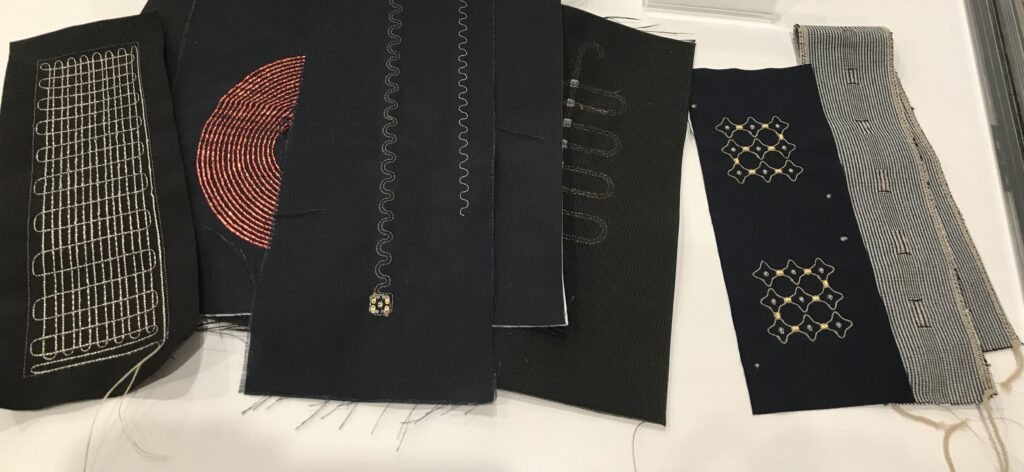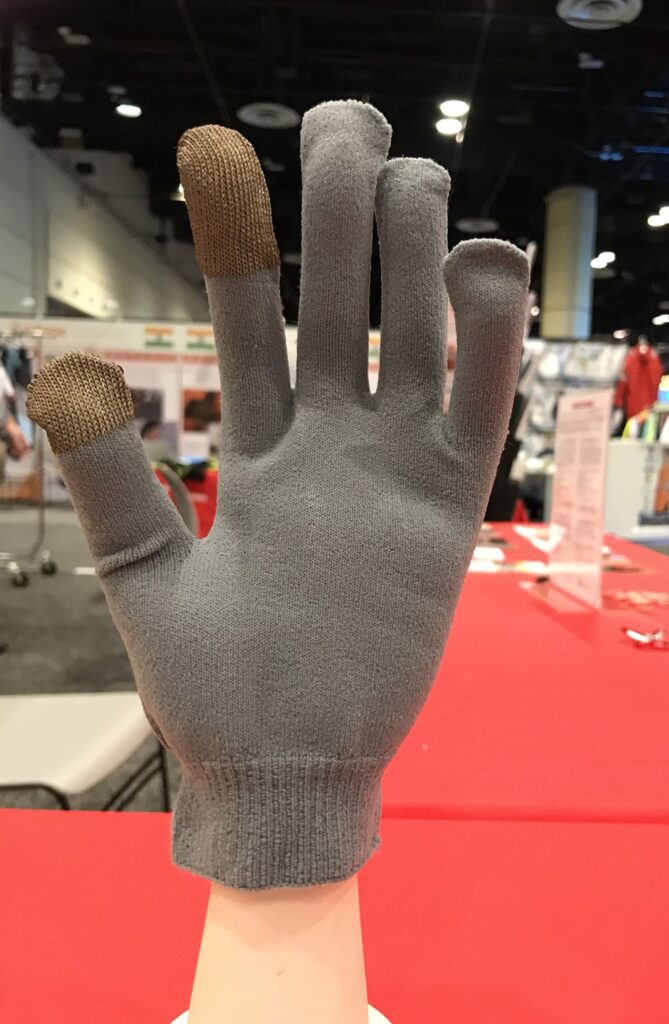
In its final declaration, the recent COP28 called for countries to transition away from fossil fuel, signaling textile and other manufacturing sectors to explore greener methods and products. Furthermore, emerging regulations, greater momentum in the adaptation of artificial intelligence, as well as developments in textiles and related disciplines, necessitate new standards and labeling. Additionally, greater push to use sustainable products and processes also warrants new standards development.
Smart fabrics and wearables are part of advanced textiles, which are defined by their functionality and performance characteristics. COVID-19 has necessitated the need for advanced textiles and the need for effective standards to evaluate performance characteristics of high-performance textiles.
Advanced textiles find applications beyond commodities and common applications, and hence provide opportunities for both the textiles sector and the end-user industry in construction, infrastructure, medical markets, hygiene, automotive products, defense and others. This clearly necessitates the need to involve the end-user community.
In such cases, where standards in smart textile technologies are needed, internationally recognized professional associations, such as ASTM International, the American Association of Textile Chemists and Colorists (AATCC) and the Technical Association of Pulp and Paper Industry (TAPPI), take the lead in writing standards in fields related to textiles and tissues.
Standards must consider need and requirements not only for the immediate scenarios, but also for the future. Additionally, standards are evolved based on consensus among the industry stakeholders, participating agencies and organizations. A case in point is the development of the ASTM standard for barrier face coverings that gave guidelines for fit, filtration and breathability.
The example of masks
During the pandemic, as the virus was reported to spread due to the inhalation of droplets, face masks were considered a frontline protective measure, prior to the days of wide availability of vaccines. Filtering Facepiece Respirators, commonly known as N95 or N99 masks offer the highest level of protection. The use of these masks in countering aerosol-sized particles in confined space is well established. Such masks are regulated by NIOSH-CDC, but they have issues regarding comfort and are not preferred by end-users when long-term application is needed.
Lack of availability, as well as comfort concerns of these, necessitated the need to find effective alternatives. Research from the Texas Tech laboratory has indicated even spunmelt surgical masks are able to provide filtration efficiencies above 70 percent for aerosolized particles ranging between 150 and 30 nanometers.
When standard evaluation procedures and guidelines are in place, masks offer effective protection, with a uniform barrier that can also suit the needs of future scenarios where airborne particles are involved.
Important aspects that need to be taken into consideration, in addition to protection, are re-usability, disposability and comfort. As the virus and other micro-sized microbes can escape through leakage, the fit of masks is also important. Previous articles in this publication (“The evolving business of PPE,” for example) have highlighted these functionalities, emphasizing the need for “the 3Fs: filtration—fit; and form or comfort”—in standards development.
Important stakeholders, such as ASTM International, representatives from the U.S. Centers for Disease Control (CDC), the Good Housekeeping Institute, International Personal Protection Inc. and others, engaged in the field to develop the standard ASTM F3502. This standard is unique in that it refers to the quality of the face mask by labeling its performance at two levels.
Level 1 refers to 20 percent or more filtration efficiency, and Level 2 corresponds to 50 percent or more efficiency. ASTM F3502 qualitatively categorizes different face masks as Level 1 or Level 2 for its particle filtration efficiency enabling intelligent selection of masks. Similarly, breathability will be rated as Level 1 with a resistance of less than or equal to 15 mm H2O, and Level 2 with a resistance less than or equal to 5 mm H2O.
Another aspect mentioned in this standard is leakage; however, the standard itself leaves this aspect to the manufacturers to clearly provide information on design and fit. Face masks should meet Level 1 breathability and the filtration efficiency is expected to be between 50–80 percent. This standard development is a good example of working collectively and considering a balanced approach based on need and utility.
Standardizing bodies must be nimble and react promptly to the needs and consider aspects based on feedback from the industry and user community, but proper education of consumers about the standards, including correct labeling, are also needed.

Evolving standards
New standards may be needed as sustainability goals, circularity requirements, technology advancements and toxic chemical regulations change. Preferences, which may be based on health or well-being decisions, also change and the industry needs to respond.
One standard issue which is attracting mainstream attention is how to dispose of wipes and other hygiene products—specifically, are they flushable? The nonwovens sector is in the spotlight on this issue and has been engaging with local municipal governments to address their concerns and needs. Additionally, correct labeling of products is of paramount importance so that consumers are well-educated about the flushability and degradation of hygiene products.
The efforts by the Cary, N.C.-based Association of the Nonwoven Fabrics Industry (INDA) and Brussels-based nonwovens industry association, EDANA, showcase active engagement with the nonwoven industry, policy makers NGOs, as well as local and national level government agencies to address concerns from municipal sewer and water agencies and outreach with the community and stakeholders.
There is growing interest in the use of wet wipes instead of dry toilet tissue due to medical necessities. Hence standards must clearly guide the labeling of wipes, such as the characteristics of these products and their disposability. INDA has refined its earlier guidelines and has developed its fourth edition guidelines for assessing the flushability of disposable nonwoven products (GD4). According to INDA, flushable wipes that pass GD4 pose no problem in sewers and other water bodies. Again, proper labeling and consumer education are key in markets such as single-use disposable products.
Emerging areas
In the case of smart textiles, particularly wearables and electronic textiles, there is a crucial need for standards. This field is in a nascent stage but getting due attention and needs engagement with the electronics industry and its standardization groups. RTP-based American Association of Textile Chemists and Colorists (AATCC) has a dedicated committee RA111 that focuses on developing test methods and standards for electronically integrated textiles. This committee has developed two standards so far:
- TM210: Electrical Resistance Before and After Various Exposure Conditions
- EP13: Electrical Resistance of Electronically Integrated Textiles
A major aspect of such wearables is their resistance to washing, drying and other exposure conditions.
According to Diana Wyman, executive vice president of AATCC, “Our association has partnered with a member, Nautilus Defense, to develop electrical resistance probes specifically for e-textiles after laundering and other exposure conditions. The research effort has found that magnetic probes and a flat contact area were most suitable for electronic textiles. Groups such as the International Electrotechnical Commission and International Organization for Standardization have expressed interest in working with AATCC to further refine and specify the probes for use in various e-textile standards.”
Professional associations in the advanced textiles industry also have their work cut out for them in tackling this complex subject.
Similarly, new regulations and standards are important to meet the needs for performance, delivering quality products, avoiding negative medical and environmental outcomes, and to contain costs. REACH is a European Union regulation established to protect human health and the environment from the risks that can be posed by chemicals. Standards and guidelines for the use of Per- and Polyfluorinated Substances (PFAS) have been passed and more are forthcoming. These standards need to address all toxic aspects and PFAS use in applications.
There will always be a need to evolve earlier standards and develop new standards, particularly as the advanced textiles sector is emerging. Engaging with all stakeholders is the way forward, and manufacturers and consumers both need to have enough accurate information, and that requires proper labeling.
Dr. Seshadri Ramkumar is a professor in the Department of Environmental Toxicology and The Institute of Environmental and Human Health, Texas Tech University, and a regular contributor to Textile Technology Source.
 TEXTILES.ORG
TEXTILES.ORG


